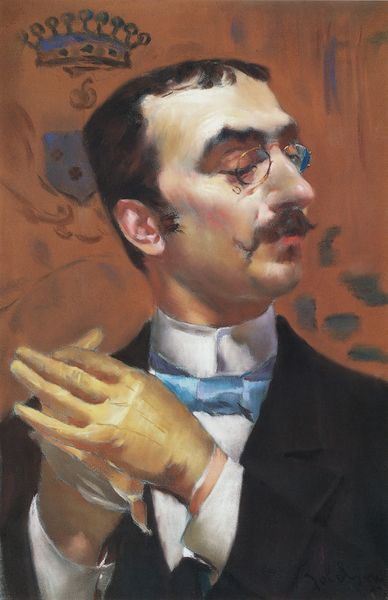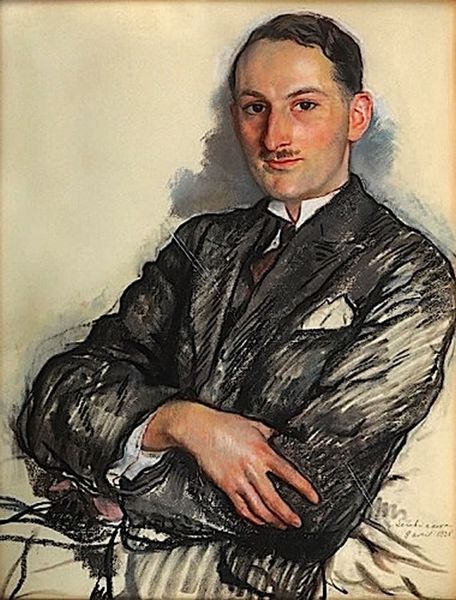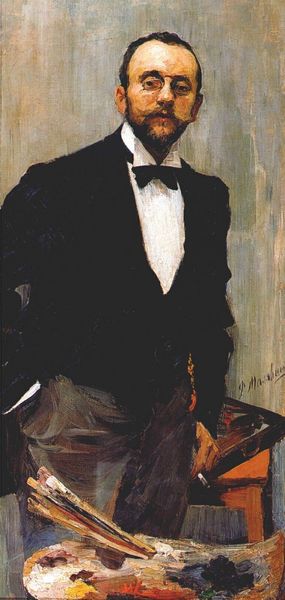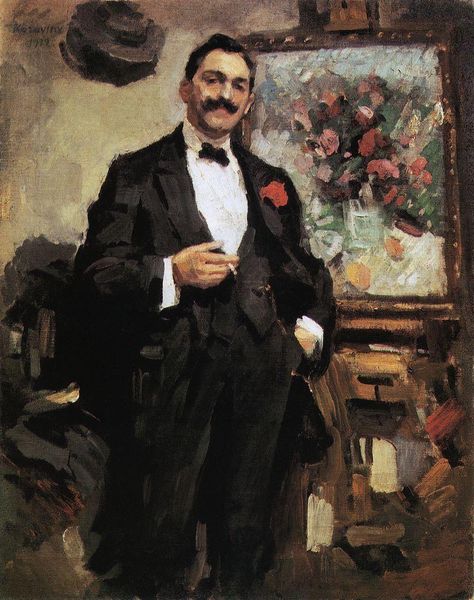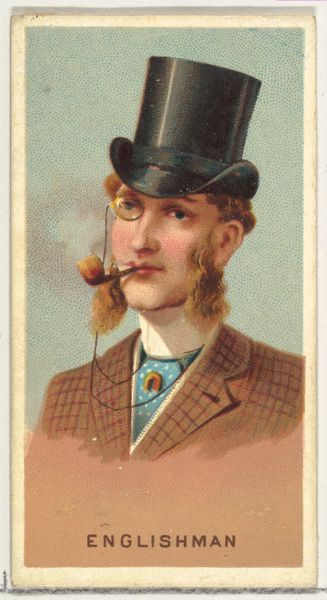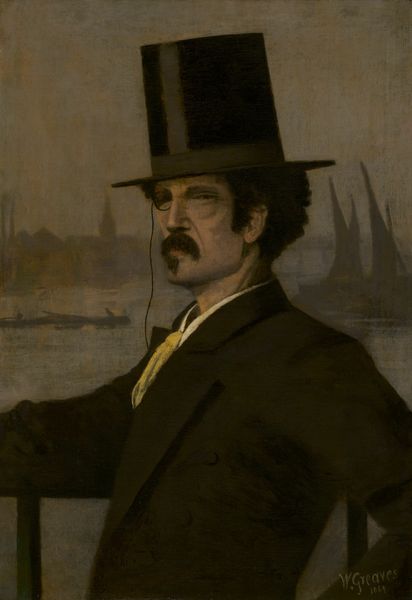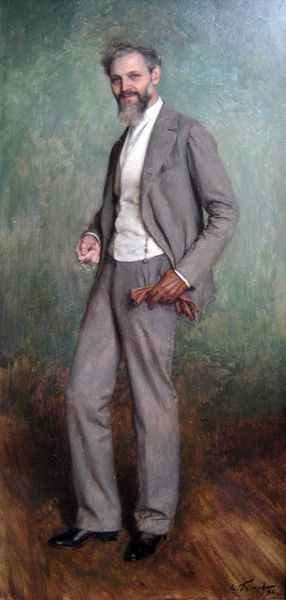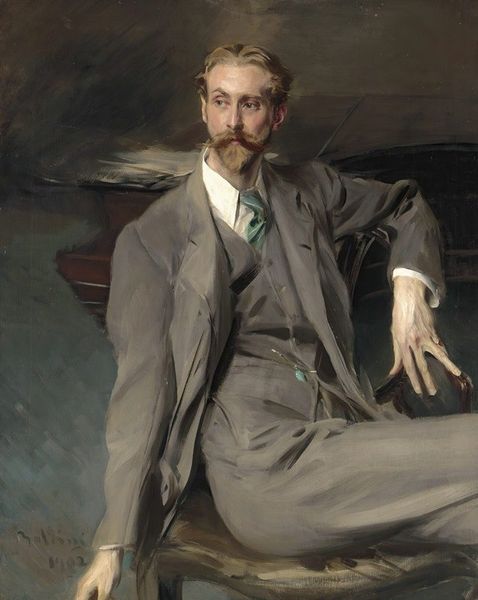
Copyright: Public domain
Giovanni Boldini painted this oil on canvas portrait of Count Robert de Montesquiou in 1897. Montesquiou was a key figure in the French Aesthetic movement, a champion of art for art's sake, valuing beauty above all else. Boldini presents Montesquiou as a refined, perhaps even theatrical figure. His posture is poised, his gaze directed upwards, embodying the dandyism prevalent in Parisian high society at the end of the 19th century. Montesquiou’s elevated social status is emphasized by his elegant suit, gloves, and walking cane, which were all visual markers of wealth and privilege. The portrait reflects a society deeply concerned with appearances and social hierarchies, a society in which art functioned as a status symbol. To fully understand this portrait, we need to consider the cultural and economic structures of the French Third Republic. Auction records, biographies, and exhibition reviews offer a glimpse into how figures like Montesquiou shaped artistic tastes and solidified the role of art as an emblem of social distinction.
Comments
No comments
Be the first to comment and join the conversation on the ultimate creative platform.





